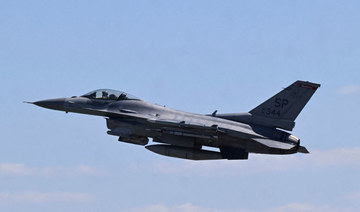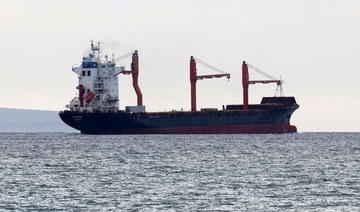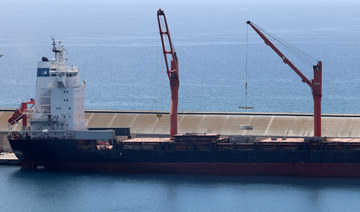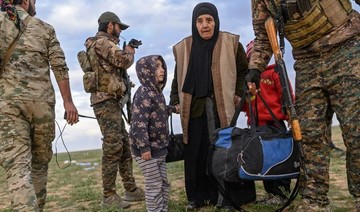ANKARA: In a significant geopolitical development, Canada has decided to lift its years-long embargo on exporting air strike-targeting gear to Turkiye, as reported by Reuters. The embargo, originally prompted by concerns over the diversion of Canadian optical drone technology to Turkish ally Azerbaijan during the 2020 conflict with Armenia, is set to end following Turkiye’s ratification of Sweden’s NATO application protocol.
The resumption of export permits for the Canadian-made L3Harris Wescam targeting equipment comes after a parliamentary vote and presidential approval in Turkiye, aligning with the Swedish NATO accession process.
Rich Outzen, a senior fellow at the Atlantic Council, views this move as a positive step toward NATO allies collaborating on defense initiatives.

Turkish president Tayyip erdogan meets with canadian prime Minister Justin Trudeau in Vilnius, lithuania. The potential thaw is seen not only through the resumption of canadian exports but also through progress on an F-16 deal. (Reuters)
“It was a different world when Canada stopped such exports. Russia had not ramped up its war in Ukraine, Turkiye had not mended fences with many pro-Western states in the Middle East, and Turkish aerospace industries had not advanced as far as they have today,” he told Arab News.
The embargo covered permits for various military goods, including camera components integral to Turkish drones.
Noting that the L3 Harris/Wescam systems are useful in drones such as Turkiye’s Bayraktar TB2, many of which have been exported to Ukraine, Outzen said that there was a shared interest of Turkiye and the US/Canada when agreeing to lift this critical embargo.
“The Turks can manufacture domestic optics, but perhaps not in the quantity needed and perhaps not at the same level of sophistication,” he said.
While not officially confirmed, Reuters reports that the new deal includes a commitment for Canada to receive information on the end-users of the military equipment, especially if re-exported to non-NATO members.
The potential thaw in defense-industrial cooperation is seen not only through the resumption of Canadian exports but also through progress on an F-16 deal.
Outzen thinks the Canadian announcement shows an unfreezing of Turkiye-North American defense industrial cooperation.
“Turkiye is a growing player in the defense industry — including ammunition and ground vehicles as well as drones and related equipment — so this is an important development for the alliance,” he said.
“The West has a need for more defense industrial production, given the threat of multiple wars and the reality of limitations in the Western defense industrial base. Turkiye needs the continued technological partnering. So, the door is open for mutually beneficial defense cooperation to increase.”
Turkiye, keen on upgrading its military technology, linked Sweden’s NATO membership to the approval of a $23 billion sale of F-16 fighter jets, including modernizing its existing fleet.
The US State Department’s recent approval of the sale aligns with US foreign policy goals to enhance Turkiye’s air capabilities and interoperability within NATO.
The $23 billion sale of F-16 fighter jets to Turkiye includes 40 Lockheed Martin F-16s and equipment to modernize 79 of its existing F-16 fleet.
The State Department has recently notified Congress that it has approved the sale of F-16 aircraft and related equipment to Turkiye, after Turkish President Recep Tayyip Erdogan signed off on Sweden’s accession protocol to NATO. The lawmakers have 15 days to object following the formal notification to Congress.
The sale supports US foreign policy goals “by improving the air capabilities and interoperability” of NATO ally Turkiye, according to a statement from the Defense Security Cooperation Agency on Friday.
Sine Ozkarasahin, an analyst in the security and defense program at EDAM, an Istanbul-based think tank, notes that external reliance on subsystems remains a challenge for Turkiye’s defense industrial base, particularly in high-end sophisticated solutions.
“This reliance affects industries like the fifth-generation tactical military aircraft, submarines and main battle tanks more than drone systems,” she told Arab News.
Despite restrictions affecting projects like the Altay main battle tank, Ozkarasahin highlights how Turkish drone manufacturers found alternatives, such as the domestically developed Aselsan national camera system.
“We saw how Turkiye’s Altay main battle tank project stalled because of Germany’s export restrictions,” she said.
However, according to Ozkarasahin, Turkish drone manufacturers such as Baykar were able to find a way around the restricted Canadian systems such as the L3Harris Wescam by reaching out to indigenous replacements, as well as other supply channels.
“The domestically developed Aselsan national camera system, Common Aperture Targeting System, is one example,” she said.
The Canadian embargo obliged Ankara to produce the embargoed parts on its own, which reinforced domestic production capabilities, like the indigenous armed drone Bayraktar TB2 UCAV using domestically developed electro-optic reconnaissance, surveillance and targeting system CATS that was developed by Turkish defense company Aselsan.
Ozkarasahin thinks that Canada’s move to lift the export controls that it adopted back in 2020 can fuel a positive momentum and a softening approach towards Turkiye within the Western bloc.
“As a NATO country with a defense ecosystem compatible with the Alliance’s military doctrine and infrastructure, from a technical standpoint, trading with Western partners is always the best alternative for Ankara,” she said.
Yet, Ozkarasahin also said that Turkiye’s Western allies that had previously imposed embargoes on Ankara — such as Canada — will see that the Turkish supply pool now includes more variety, meaning more competition.
In the meantime, the mass production of Turkiye’s indigenous long-range air defense system SIPER Product-1 has recently begun, and it is expected to rival the Russian S-400.
Haluk Gorgun, the head of the Turkish Defense Industries Presidency, recently announced that the systems would be delivered to the Turkish Air Forces Command in mid-2024.
How the sale of US fighter jets to NATO member Turkiye will impact Ankara-Moscow ties is still uncertain, as Ankara has long maintained its close ties and military technology trade with Moscow as an instrument to bolster its security needs.
In the past, Ankara’s deal with Moscow for the purchase of a multibillion-dollar Russian S-400 mobile surface-to-air missile system triggered several US sanctions on the NATO ally over the concerns that it would pose a risk to the NATO alliance as well as the US-led F-35 joint strike fighter program. Washington also removed Turkiye from the F-35 joint strike fighter program.
“In the given technical context, Russia and Turkiye don’t and can’t have a meaningful defense relationship. The S-400 incident was an anomaly. Haluk Gorgun’s statements stating that the entry of assets like the Long-Range Regional Air and Missile Defense System Project (SIPER) into the Turkish arsenal made the S-400 unnecessary show that there is no real appetite in Ankara to build such ties with Moscow in the coming months,” Ozkarasahin said.
The purchase of new F-16s signifies a pivotal moment for Turkiye’s aging air force arsenal, following its exclusion from the F-35 program in 2019 over the Russian missile defense system acquisition.























